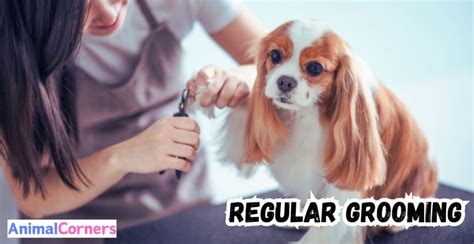How To Prevent Burrs On Dogs
Ronan Farrow
Mar 25, 2025 · 3 min read

Table of Contents
How to Prevent Burrs on Your Dog: A Comprehensive Guide
Burrs are a common nuisance for dogs, especially during the warmer months. These pesky seed pods stick to fur, causing discomfort and even potential injury if left untreated. This guide will provide you with effective strategies to prevent burrs from becoming a problem for your furry friend.
Understanding the Burr Problem
Before diving into prevention, let's understand why burrs are such a nuisance. Burrs are equipped with tiny hooks or barbs that easily catch onto dog fur, making them difficult to remove. The longer they stay attached, the more irritation they can cause, leading to:
- Skin Irritation: The constant tugging and pressure of the burrs can irritate your dog's skin, potentially leading to scratching, redness, and even hot spots.
- Matting: Burrs can tangle and mat your dog's fur, particularly in long-haired breeds, making grooming more difficult and potentially painful.
- Ingestion: If your dog grooms themselves aggressively, they might accidentally ingest burrs, which can cause internal problems.
Proactive Prevention Strategies: Keeping Burrs Away
Prevention is always better than cure. Here are some effective ways to keep those pesky burrs away from your dog:
1. Regular Brushing
Consistent brushing is your first line of defense. Regular brushing removes loose fur and debris, making it harder for burrs to get a grip. Aim for daily brushing, especially during burr season (typically late summer and fall). The frequency will depend on your dog's breed and coat length.
- Choose the Right Brush: Select a brush appropriate for your dog's coat type. De-shedding tools can be particularly helpful.
- Pay Attention to Problem Areas: Focus on areas where burrs are most likely to attach, such as the legs, underbelly, and tail.
2. Protective Clothing
For dogs who spend a lot of time outdoors in burr-prone areas, consider using protective clothing. Dog coats or overalls can act as a barrier, preventing burrs from directly contacting your dog's fur.
- Choose Breathable Materials: Opt for lightweight, breathable fabrics to avoid overheating your dog.
- Consider the Fit: Ensure the clothing fits well and doesn't restrict your dog's movement.
3. Post-Walk Checks
After every walk, especially in areas with known burr infestations, thoroughly check your dog's fur for burrs. Early detection and removal are key to preventing discomfort and matting.
4. Careful Walk Selection
Be mindful of where you walk your dog. Avoid areas known for high burr concentrations. If you must walk in such areas, keep your dog on a leash and monitor them closely.
5. Post-Walk Grooming
Develop a post-walk grooming routine. This involves brushing your dog immediately after a walk to remove any lingering burrs or plant material before they become embedded.
Removing Burrs: A Gentle Approach
Even with preventative measures, burrs may still find their way onto your dog. When removing burrs, always use a gentle approach:
- Use your fingers: Carefully work to remove smaller burrs using your fingers.
- Use a de-matting tool: For larger, more embedded burrs, a de-matting tool can help gently separate the burrs from the fur.
- Use blunt-ended scissors: In certain cases, blunt-ended scissors may be needed to carefully cut the burr away from your dog’s fur. Never use sharp scissors.
- Never pull forcefully: Pulling forcefully can cause pain and damage your dog's fur and skin.
When to See a Vet
If you find a significant number of burrs, or if your dog shows signs of discomfort, redness, or skin irritation, consult your veterinarian. They can help remove stubborn burrs and address any underlying skin issues.
By combining preventative measures and careful removal techniques, you can significantly reduce the chances of burrs becoming a problem for your canine companion, ensuring their comfort and well-being.
Featured Posts
Also read the following articles
| Article Title | Date |
|---|---|
| How To Identify Demons | Mar 25, 2025 |
| How To Make Cheap Garland Look Expensive | Mar 25, 2025 |
| How To Keep Air Conditioner Drain From Clogging | Mar 25, 2025 |
| How To Join Odd Fellows | Mar 25, 2025 |
| How To Keep Bark On Live Edge | Mar 25, 2025 |
Latest Posts
-
How Long After A Cartilage Piercing Can You Swim
Apr 05, 2025
-
How Long After A Brow Lamination Can I Shower
Apr 05, 2025
-
How Late Is Too Late For A Date
Apr 05, 2025
-
How Late Can You Plant Sunflowers Zone 5
Apr 05, 2025
-
How Late Can You Overseed In The Fall
Apr 05, 2025
Thank you for visiting our website which covers about How To Prevent Burrs On Dogs . We hope the information provided has been useful to you. Feel free to contact us if you have any questions or need further assistance. See you next time and don't miss to bookmark.
